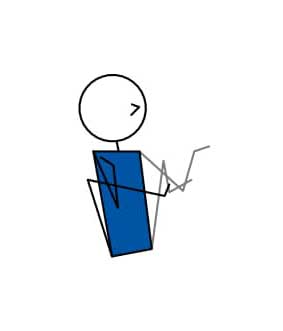| Category: |
Yoga Lesson Planner |
| Sub Category: |
Seated & Floor |
| Types: |
Balance, Seated, Seated & Floor, Strengthen |
| Anatomy: |
Arms & Shoulders, Core, Lower Back, Middle Back, Neck, Wrists & Arms |
| Chakras: |
Base, Heart Centre, Sacral Centre, Solar Plexus Centre, Throat Centre |
| Therapy: |
Anxiety, Confidence Building, Depression, Indigestion, Leg Congestion, Stress, Varicose Veins |
| Drishti: |
Tips Of Feet |
| Dosha: |
Pitta |
From Butterfly pose with heels touching, reach the arms over the thighs and under the calves. Rock back until balanced on the sit bones, and the hands take Gyan Mudra (thumb and forefinger touching).
Strengthens abdominals, hip flexors, and spine.
A) Boat pose. B) Boat pose with eagle arms.
Flowering Lotus Pose FAQs
What is the Sanskrit for Flowering Lotus Pose?
Vikasitakamalasana
Vikasita = “blossomed” or “expanded”
Kamala = “lotus flower” or “sacred lotus”
Asana = “pose” or “posture”
What does Flowering Lotus Pose represent?
Because when you’re in the pose you’ll look just like a flowering lotus. In Yogic cultures, the sacred lotus is used as a symbol of growth towards perfection and enlightenment as it is rooted in the mud at the bottom of the pond, but rises and blooms above the water.
What other names is Flowering Lotus Pose called?
It’s a variation of the Lotus pose and is also called the “Blooming Lotus Pose”.
What are the physical benefits of Flowering Lotus Pose?
It’s an advanced seated hip-opener and balancing pose. It stabilizes the body and stimulates the spine. It stretches the ankles, hips, glutes, hamstrings and knees. It stimulates the reproductive organs.
Why are the benefits of balancing poses?
Balancing poses improve steadiness in the ankle joints, strengthen core muscles, legs and enhance focus. Balance poses also give direct feedback to the practitioner when they’re being distracted, which leads to mindfulness.

 Yoga Lesson Planner
Yoga Lesson Planner
 Pilates Lesson Planner
Pilates Lesson Planner

 Yoga Lesson Planner
Yoga Lesson Planner
 Pilates Lesson Planner
Pilates Lesson Planner